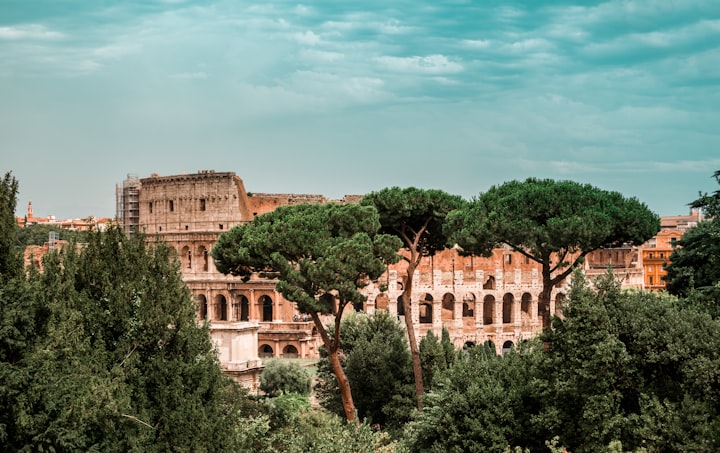Things You Should Know About Colosseum Before Visiting
A Mini Guide About Colosseum in Rome

The Colosseum is a must-see for everyone visiting Rome, and it does not disappoint, especially when told with tales of armored gladiators and ferocious lions. This majestic amphitheatre exemplifies the ancient world's power and drama. The Colosseum, unsurprisingly, gets almost seven million people each year.The Colosseum has three entrances, each designed to appeal to a distinct group of guests and offer a seamless experience for all 7 million+ visitors.The Colosseum's various entrances also serve to alleviate the crowds at this popular arena. Knowing which entry to the Colosseum to use can reduce your waiting time and allow you to enter this crown jewel of Rome without any issues. Continue reading to learn more about the three Colosseum entrances.
The Colosseum's History
In the year 72 CE, Flavian emperor Vespasian had this amphitheatre erected, which could hold 65,000 spectators. The Colosseum took eight years to build and was paid for by plunder acquired from Jerusalem. Emperor Titus opened the Colosseum, also known as the Amphitheatrum Flavium, with games and festivities that lasted one hundred days and cost the lives of 5,000 animals. Emperor Domitian, Titus' successor, eventually added an extra layer to the amphitheatre as well as a number of spaces beneath the Colosseum. The Colosseum of Rome became the greatest amphitheatre in Roman history, and it is now considered one of the world's seven wonders.
The Amphitheatre in Rome
The major objective of the Colosseum in Rome was to entertain the people with gladiator bouts, which often included wild creatures such as elephants and tigers, in order to improve the emperor's reputation. Animal battles were frequently held in the mornings by the 'bestiarii.' Convicted offenders were frequently given to wild animals during intermissions. In the afternoons, gladiator combat took place.
Several earthquakes struck the Colosseum during the Middle Ages, destroying most of it. The remains were removed by popes and others in succeeding years so that the stones could be used to build churches and palaces. In 1749, Pope Benedict XIV stop this pillage. Because of its important history, he considered the Colosseum in Rome to be sacred ground; the blood of many Christian martyrs had been spilt there.
Facts of Colosseum
The amphitheatre had eighty entry arches, and the name 'Colosseum' (or Coliseum) was derived from the huge statue of Emperor Nero (Colossus of Nero) that stood beside it at the time. The amphitheatre has a total circle of 527 meters and a maximum height of 48.50 meters. They used limestone , lighter bricks, and concrete for construction. Travertine from the hills surrounding Tivoli was used for the exterior.
The Amphitheatre’s stands were divided into four galleries. Senators, magistrates, and other important people sat in the seats closest to the arena. The emperor even had his own private entrance and box. The second and third gallery were for male spectators, with the better classes seated closer to the action. The women of senators and knights sat in the upper, fourth gallery. The Colosseum could be covered by a vast cloth awning, known as the Velarium, back then. The awning was tightened across 240 masts by a thousand sailors, according to folklore.
Do you want to go to the Colosseum?
We strongly advise booking Colosseum entrance tickets in advance for a stress-free visit to Rome's Colosseum. Long lines at the standard ticket window are unfortunately usual. You can also see the Forum Romanus and the Palatine with this combination ticket. This one-day combination ticket is a must-have for anybody visiting Rome.
The Vatican's Sistine Chapel
A visit to the Sistine Chapel ('Capella Sistina') is the ultimate climax of the Vatican museums tour. The chapel's name comes from the founder, Pope Sixtus IV. Michelangelo painted the spectacular ceiling of this 15th-century Sistine Chapel in the 16th century. It depicts the creation myth, the great flood, and other episodes. The side walls are similarly lovely, with paintings by Ghirlandaio, Botticelli, Perugino, Pinturicchio, and others depicting the life of Jesus. Michelangelo's picture of the 'Last Judgement' hangs on the wall behind the alter. The Sistine Chapel is most recognized as the location where cardinals convene for conclave to elect a new pope.
The chapel's chimney emits smoke twice a day when a new pope is elected. White smoke indicates that a new pope has been elected, while black smoke indicates that the cardinals' mission has not yet been completed.The Sistine Chapel is both a sacred location utilized by the Pope on a daily basis and a hugely popular Roman tourist attraction. The chapel, which is part of the Vatican Museums, is known for its long queues. Skip the line Sistine Chapel & Vatican Museums to enter else it can be quite long, taking two or more hours in some cases.






Comments
There are no comments for this story
Be the first to respond and start the conversation.